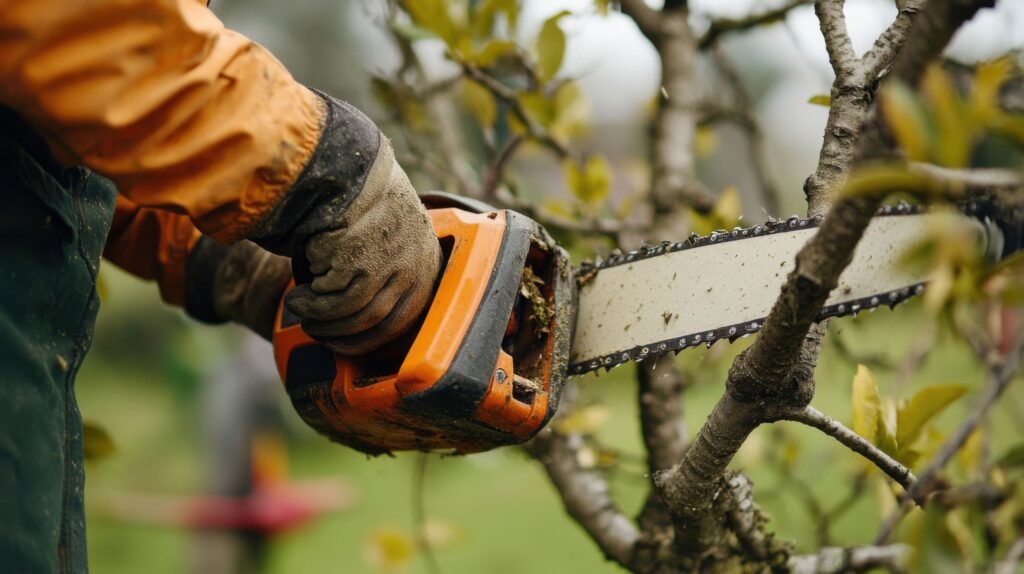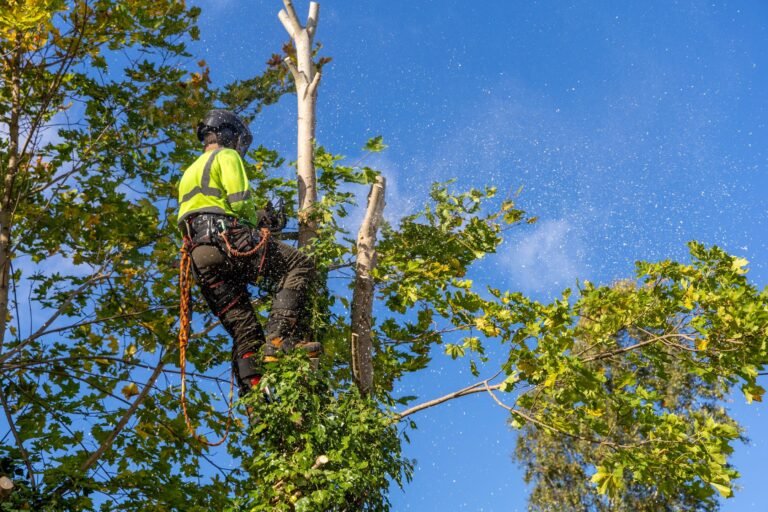Maintaining healthy trees requires year-round attention, as each season presents unique challenges and opportunities for growth. Proper tree care can enhance the beauty of a yard and promote longevity, prevent disease, and ensure safety. Whether dealing with harsh winters, scorching summers, or transitional periods in between, a well-planned seasonal approach can help keep trees thriving.
Here’s your seasonal tree care guide for a healthy yard year-round.
Table of Contents
Spring: Renewal and Growth
Spring signals the start of active growth, making it the perfect time to evaluate trees for winter damage. Below are the factors to consider when maintaining your trees during the spring season:
Inspection and Pruning
Begin by carefully examining trees for cracked, broken, or diseased branches. Removing these damaged limbs can promote vigorous new growth while reducing safety risks from falling debris. Strategic pruning improves structure and airflow. However, over-pruning can also weaken trees by removing too much foliage, hindering energy production and increasing vulnerability to pests and disease.
However, for expert advice tailored to specific climates, you can seek assistance from providers like Payne Tree Services or similar options to obtain more valuable insights.
Fertilization and Mulching
A slow-release, balanced fertilizer in early spring can replenish vital nutrients depleted during winter dormancy, supporting strong seasonal growth. A 2–4-inch layer of organic mulch conserves soil moisture, moderates’ temperature fluctuations, and inhibits weed competition. Also, maintain a 3-inch clearance around trunks to prevent moisture buildup and bark decay from excessive mulch contact.
Pest and Disease Management
Spring’s rising temperatures can activate destructive pests like borers and aphids while encouraging fungal growth. Weekly inspections should target abnormal leaf spots, oozing sap, or sawdust-like frass around bark crevices. At first signs of trouble, targeted neem oil applications or systemic treatments can effectively contain outbreaks before they can compromise the tree’s vascular system or structural integrity.
Summer: Protection and Maintenance
Summer’s intense heat and prolonged dry spells can place significant stress on trees, increasing vulnerability to dehydration, sunscald, and pest infestations. Here’s what you need to consider to keep your trees healthy during the summer season:
Watering Practices
During summer, deep watering 2-3 times weekly encourages roots to grow downward, creating drought-resistant trees. Saplings need 10-15 gallons weekly, while mature trees thrive with slow soaks reaching 12-18 inches deep. Morning irrigation before 9 a.m. can also reduce water loss compared to daytime watering.
Shade and Sun Protection
Young trees benefit from shade cloth or burlap screens during their first 1-2 summers to prevent bark damage from intense sunlight. Light-colored tree wraps reflect heat while allowing air circulation, protecting tender trunks from sunscald and temperature fluctuations. These protective measures should be removed in fall to prevent moisture retention and pest issues during cooler months.
Monitoring for Stress
Signs like curled, brown-edged leaves or vertical bark cracks can signal dangerous dehydration. When detected, immediately increase deep watering frequency and apply anti-transparent sprays to foliage, which form a protective coating that reduces water loss.
Fall: Preparation for Dormancy

As autumn arrives, trees undergo physiological changes to enter dormancy, redirecting energy to root systems. This transitional period can present a crucial window for key maintenance tasks. These include:
Leaf Management and Cleanup
Removing fallen foliage can eliminate hiding spots for overwintering pests like borers and prevents fungal spores from spreading diseases like anthracnose. Shredded leaves can also make excellent nutrient-rich mulch when composted, returning the tree’s seasonal nutrients to the soil while improving moisture retention and microbial activity in the root zone.
Pruning and Structural Support
Strategic fall pruning can also eliminate hazardous limbs vulnerable to snow-load fractures, particularly those with narrow crotch angles or existing cracks. For multi-stemmed trees or those with split leaders, professional cabling systems can redistribute weight using high-strength steel cables, while braces provide rigid support. Both are installed to allow natural movement while preventing catastrophic failures during winter storms.
Root Care and Fertilization
Fall fertilization with phosphorus-rich, low-nitrogen formulations can help promote robust root development without triggering tender new growth. These specialized fertilizers can release nutrients gradually over 6-8 weeks, fortifying root systems against freeze damage while storing essential energy for spring resurgence.
Winter: Preservation and Planning
Winter’s freezing temperatures, drying winds, and heavy snow accumulation can threaten tree health through frost cracks, desiccation, and branch breakage. Implementing protective measures such as the following can help trees endure harsh conditions while maintaining cellular integrity for successful spring revival:
Protecting Against Frost and Ice
Protective tree wraps can insulate thin bark from winter’s extreme temperature swings that cause vertical frost cracks. For snow removal, use upward broom strokes to avoid putting pressure on already-weighted branches. These simple precautions can prevent common winter tree injuries while allowing proper oxygen exchange through specialized wrap materials designed for cold-weather protection.
Minimizing Salt Damage
Road salt’s sodium chloride can disrupt root nutrient absorption and causes soil compaction. Calcium chloride alternatives melt ice at lower temperatures while being less harmful to vegetation. In early spring, deeply water salt-affected areas can flush away sodium ions, applying 2 inches of water over several hours helps leach salts below the root zone.
Dormant Season Pruning
Dormant season pruning offers multiple advantages: with leaves gone, branch structure is visible for precise cuts and minimized sap flow reduces stress. Most pathogens are inactive in cold weather, lowering infection risks. Target crossing/rubbing branches first, then address structural defects, creating stronger form while eliminating winter breakage hazards before storms strike.
Final Thoughts
By following a structured seasonal care plan, you can maintain vibrant, healthy trees that enhance property value and environmental sustainability. Proper techniques, timely interventions, and expert guidance can ensure a thriving yard throughout the year.

